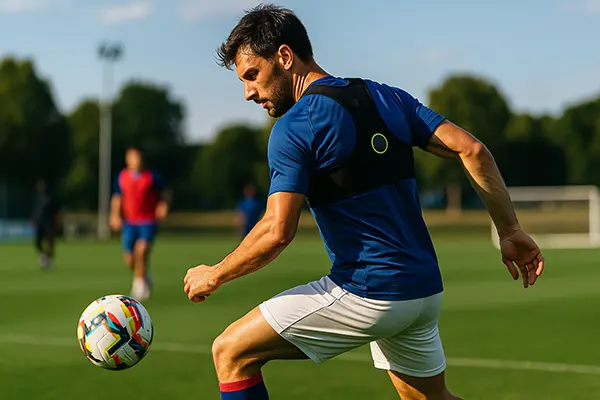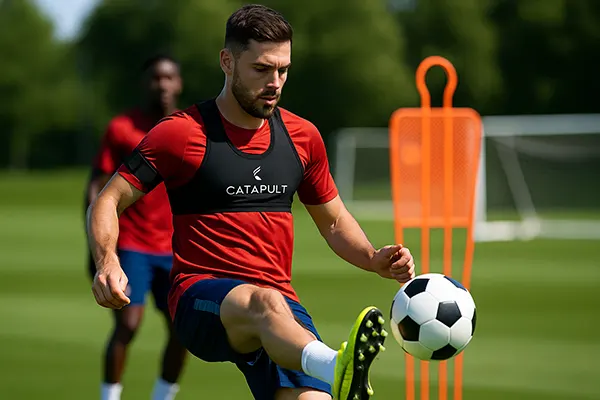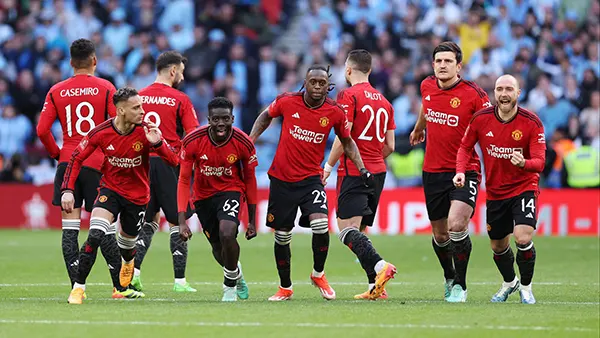Wearables in Football: How Sensors Are Transforming Training and Gameplay

Wearable technology has become an essential part of modern football, offering real-time insights into player performance, physical condition, and tactical execution. By 2025, top clubs worldwide have fully integrated advanced sensors into their training routines and match preparations, using them to reduce injuries, improve fitness, and refine strategies on the pitch.
Evolution and Adoption of Wearables in Football
The first wearable devices in football were GPS vests used to measure distance and running speed. Over the past decade, these tools have evolved into advanced systems capable of monitoring heart rate, muscle fatigue, sprint acceleration, and overall workload. Today, nearly every professional team employs wearables during both training sessions and competitive matches.
Data collected from these devices is crucial for preventing overtraining and fatigue-related injuries. Real-time metrics enable coaching staff to adapt training loads instantly, protecting players from excessive strain and optimising performance levels throughout the season. This immediate feedback loop has reshaped how clubs plan and execute training programmes.
In addition to fitness metrics, motion sensors integrated into boots and shin guards now track kicking dynamics, balance, and stride patterns. Such biomechanical analysis helps improve individual technique, reduce injury risk, and support personalised rehabilitation programmes for injured players.
Challenges in Integration and Data Accuracy
Despite their benefits, wearables still face issues with accuracy during high-intensity actions like sudden sprints or tackles. Clubs must cross-check the data to ensure reliability before making key performance decisions. Regular calibration of devices and standardised data protocols have become crucial practices in 2025.
Another challenge lies in ensuring the correct interpretation of the collected data. Coaches and analysts require specialised training to translate raw numbers into actionable insights. Misreading sensor output can lead to inappropriate training loads or tactical errors, which may harm performance rather than enhance it.
Furthermore, balancing the volume of data with its actual usefulness is vital. Too much data can overwhelm coaching staff, so clubs increasingly rely on AI-driven analytics systems to filter and present only the most relevant metrics for decision-making.
Impact on Training Methods and Player Development
Wearables have completely transformed training approaches in professional football. Instead of generic team-wide drills, training is now individualised based on each player’s physical condition and performance profile. This personalised planning maximises efficiency and reduces the risk of injuries caused by overexertion.
Player load monitoring enables coaches to schedule rest periods and manage match intensity more effectively. This has proven especially beneficial in busy competition calendars, helping maintain consistent performance levels across an entire season. Clubs report fewer soft tissue injuries and faster recovery rates.
Moreover, youth academies are increasingly adopting wearables to track early talent development. Monitoring physical growth and skill progression helps identify promising players and tailor their training plans from an early age, improving long-term performance outcomes.
Role of Data in Skill Enhancement
Beyond fitness, wearables provide detailed insights into technical skills. Sensors track striking force, foot placement, and ball contact angles, enabling players to refine their passing, shooting, and dribbling techniques through objective feedback. This has made technical training more precise and measurable than ever before.
Video analysis combined with wearable data creates a holistic view of player movement. Coaches can overlay physical metrics on video footage to identify biomechanical inefficiencies, which players can then correct through targeted drills. This approach enhances both technique and injury prevention.
Additionally, wearable feedback allows players to monitor their progress autonomously. Real-time data accessible through mobile dashboards motivates players to take ownership of their development, fostering a more professional mindset from a younger age.

Ethical and Regulatory Considerations in 2025
As wearable use becomes standard, ethical concerns and regulations have become a major focus. Questions about data privacy, ownership, and consent are now addressed by strict policies introduced by governing bodies like FIFA and UEFA. Clubs must obtain explicit consent from players before collecting personal performance data.
Data security has also become a priority. Sensitive performance metrics are now stored on encrypted servers to prevent leaks or misuse. Breaches could give rival teams unfair advantages or affect a player’s market value, so data protection is treated with the same seriousness as medical confidentiality.
Moreover, regulations limit how performance data can influence contract negotiations and transfers. To prevent exploitation, clubs are not allowed to use raw sensor data as the sole criterion for evaluating a player’s worth, ensuring that human judgement remains central to decision-making.
Future Directions and Technological Advancements
Looking ahead, wearable technology in football is expected to integrate more advanced AI systems capable of predicting injuries before they happen. These predictive analytics tools will analyse cumulative workload, sleep patterns, and recovery rates to alert medical teams in advance.
Another emerging trend is the use of smart fabrics that can monitor physiological signals without bulky devices. Jerseys with built-in micro-sensors are already in testing stages and could replace traditional chest straps and GPS vests within the next few years.
Finally, wearables are likely to merge with virtual and augmented reality training environments. This combination will provide players with fully immersive performance simulations, further enhancing tactical awareness, reaction time, and overall match readiness.




